Naloxone hydrochloride
- CAS NO.:357-08-4
- Empirical Formula: C19H22ClNO4
- Molecular Weight: 363.84
- MDL number: MFCD00069322
- EINECS: 206-611-0
- SAFETY DATA SHEET (SDS)
- Update Date: 2025-08-06 15:14:14
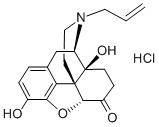
What is Naloxone hydrochloride ?
Description
Naloxone (hydrochloride) (CRM) (Item No. ISO60191) is a certified reference material categorized as an opioid antagonist. Formulations containing naloxone have been used as antidotes for opioid overdose and the prevention of overdose. They have also been used in combination with buprenorphine (Item Nos. ISO60178 | 14025) in the treatment of opiate addiction and in pain management. This product is intended for research and forensic applications.
Chemical properties
Crystalline Solid
Originator
Narcan,Du Pont,US,1971
The Uses of Naloxone hydrochloride
Naloxone Hydrochloride is a specific opioid antagonist. Narcotic antagonist.
The Uses of Naloxone hydrochloride
Opioate antidote;
The Uses of Naloxone hydrochloride
A nonspecific opiate receptor antagonist that displays anitnociceptive effects
What are the applications of Application
Naloxone hydrochloride is a nonspecific opiate receptor antagonist that displays anitnociceptive effects
Definition
ChEBI: A hydrochloride resulting from the formal reaction of equimolar amounts of naloxone and hydrogen chloride. A specific opioid antagonist, it is used to reverse the effects of opioids, both following their use of opioids during surgery and in cases of known r suspected opioid overdose.
Manufacturing Process
10 grams of 14-hydroxydihydromorphinone (oxymorphone) was converted
into its diacetate by warming it on the steam bath with 80 cc of acetic
anhydride for about 2 hours. The acetic anhydride was removed on the water
bath under a vacuum of about 30 mm absolute pressure. The melting point of
the residue was 220°C. The residue was taken up in 100 cc of chloroform. An
equal amount by weight of cyanogen bromide was added and the mixture was
refluxed at about 60°C for about 5 hours. After refluxing, the mixture was
washed with 100 cc of a 5% aqueous hydrochloric acid solution, dried over
sodium sulfate and the chloroform removed by evaporation under a vacuum of
about 30 mm. The residue had a melting point of 240°C.
The residue was then heated at about 90°C for 16 hours on a steam bath with
300 cc of 20% aqueous hydrochloric acid solution, and treated with a small
amount, e.g., 1 gram of charcoal. The hydrochloric acid was then removed
under a vacuum of 15 mm, the residue dissolved in 30 cc of water and
precipitated by the addition of 2.4 cc of concentrated aqueous ammonia. The
precipitate was filtered off and dried. It consists of 14-
hydroxydihydronormorphinone. It is soluble in ethanol.
The 14-hydroxydihydronormorphinone was suspended in 200 cc of pure ethyl
alcohol, half its weight of sodium bicarbonate and half its weight of allyl
bromide added and the resulting mixture was refluxed at about 75°C for 48
hours. The solution was cooled, e.g., to 10°C and filtered and the alcohol
removed under a vacuum of 30 mm. The residue was dissolved in chloroform
and filtered. The chloroform was removed under a vacuum of 30 mm and the
residue was crystallized from ethylacetate. The crystallized product, N-allyl-
1,4-hydroxydihydronormorphinone, has a melting point of 184°C, is soluble in
chloroform and insoluble in petroleum ether. The yield amounts to 20% based
on the weight of the reacted 14-hydroxydihydromorphinone.
brand name
Narcan (Bristol-Myers Squibb); Narcan (Endo).
Therapeutic Function
Narcotic antagonist
Biological Activity
Opioid antagonist.
Veterinary Drugs and Treatments
Naloxone is used in veterinary medicine almost exclusively for its opiate reversal effects, but the drug is being investigated for treating other conditions (e.g., septic, hypovolemic or cardiogenic shock). Naloxone may also be employed as a test drug to see if endogenous opiate blockade will result in diminished tail chasing or other self-mutilating behaviors. It, potentially, could be useful for treating overdoses of clonidine or the CNS effects of benzodiazepines (ivermectin?), but more research is necessary before recommending its use.
Metabolism
Naloxone hydrochloride is rapidly metabolised in the liver, mainly by conjugation with glucuronic acid to naloxone-3-glucuronide, which is excreted in the urine
Storage
Room temperature
References
1) Le Bourdonnec?et al., (2008),?Novel trans-3,4-dimethyl-4-(3-hydroxyphenyl)piperidines as mu opioid receptor antagonists with improved opioid receptor selectivity profiles: Bioorg. Med. Chem. Lett..?18?2006 2) Boyer?et al.?(2012),?Management of opioid analgesic overdose; New Engl. J. Med.?367?146 3) Wang?et al.?(2017),?Opioids and opioid receptors orchestrate wound repair;?Transl. Res.?185?13 4) Wright and Rodgers (2013),?Low dose naloxone attenuates the pruritic but not anorectic response to rimonabant in male rats; Psychopharmacology (Berl.)?226?415
Properties of Naloxone hydrochloride
| Melting point: | 200-2050C |
| RTECS | QD2275000 |
| storage temp. | 2-8°C |
| solubility | ethanol: 3.3 mg/mL stable for several months refrigerated if protected from light. |
| form | powder |
| color | white to off-white |
| Water Solubility | Soluble in water (73 mg/ml), ethanol (3.3 mg/ml), methanol (50 mg/ml) and dimethyl sulfoxide (73 mg/ml). Insoluble in ether |
| Stability: | Stable for 1 year from date of purchase as supplied. Solutions in DMSO or distilled water may be stored at -20°C for up to 2 months. |
| CAS DataBase Reference | 357-08-4(CAS DataBase Reference) |
Safety information for Naloxone hydrochloride
| Signal word | Warning |
| Pictogram(s) |
 Exclamation Mark Irritant GHS07 |
| GHS Hazard Statements |
H315:Skin corrosion/irritation H319:Serious eye damage/eye irritation H335:Specific target organ toxicity, single exposure;Respiratory tract irritation |
| Precautionary Statement Codes |
P261:Avoid breathing dust/fume/gas/mist/vapours/spray. P304+P340:IF INHALED: Remove victim to fresh air and Keep at rest in a position comfortable for breathing. P305+P351+P338:IF IN EYES: Rinse cautiously with water for several minutes. Remove contact lenses, if present and easy to do. Continuerinsing. P405:Store locked up. |
Computed Descriptors for Naloxone hydrochloride
Naloxone hydrochloride manufacturer
Jai Radhe Sales
New Products
4,4-Difluoropiperidine hydrochloride tert-butyl 9-methoxy-3-azaspiro[5.5]undecane-3-carboxylate Indole Methyl Resin N-Isopropylurea N,N-Dicyclohexylcarbodiimide(DCC) MELDRUMS ACID 5-METHYLISOXAZOLE-4-CARBOXYLIC ACID Magnessium Bis glycinate Zinc ascorbate 1-bromo-2-butyne 2-acetamidophenol 9(10H)-anthracenone Erythrosin B, 4-Piperidinopiperidine 2-((4-morpholinophenylamino) (methylthio) methylene) malononitrile 2,4-dihydroxybenzaldehyde 3-(4-morpholinophenylamino)-5-amino-1H-pyrazole-4-carbonitrile Methyl 2-methylquinoline-6-carboxylate 2,6-dichloro-4-nitropyridine 4-Bromo-2-chlorobenzonitrile 2-(benzylamino)acetic acid hydrochloride 4-(tert-Butoxycarbonylamino)but- 2-ynoic acid 3,4-dihydro-2H-benzo[b][1,4]dioxepine 1-Phenyl-1-cycloprppanecarboxylicacidRelated products of tetrahydrofuran
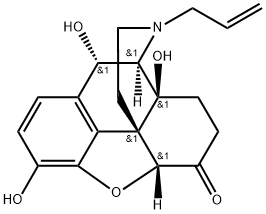

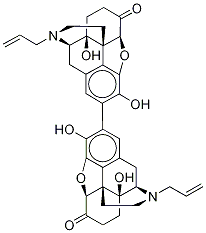

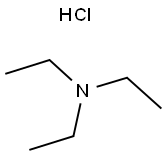

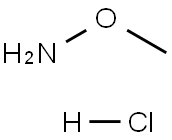
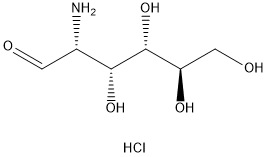
You may like
-
 0357-08-04 Naloxone hydrochloride 98%View Details
0357-08-04 Naloxone hydrochloride 98%View Details
0357-08-04 -
 Naloxone HCl 98%View Details
Naloxone HCl 98%View Details
357-08-4 -
 Naloxone hydrochloride 357-08-4 98%View Details
Naloxone hydrochloride 357-08-4 98%View Details
357-08-4 -
 357-08-4 Naloxone hydrochloride 98%View Details
357-08-4 Naloxone hydrochloride 98%View Details
357-08-4 -
 Naloxone hydrochloride 357-08-4 99%View Details
Naloxone hydrochloride 357-08-4 99%View Details
357-08-4 -
 Naloxone Hydrochloride 99%View Details
Naloxone Hydrochloride 99%View Details -
 Naloxone Hydrochloride InjectionView Details
Naloxone Hydrochloride InjectionView Details
357-08-4 -
 99% Naloxone Hydrochloride API MANUFACTURER INDIA, Jai Radhe Sales, 1KgView Details
99% Naloxone Hydrochloride API MANUFACTURER INDIA, Jai Radhe Sales, 1KgView Details
357-08-4
